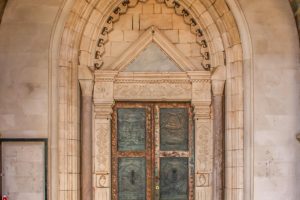Overview
Map
Other Details
كنيسة مار دانيال
Hadath Ej-Jebbeh
Bcharre
North
كنيسة مار دانيال - حدث الجبّةبعد تحوّلهم الى المسيحيّة حوّل أهالي الحدث معبدهم إلى كنيسةٍ على اسم مار الياس، ما زالت قائمة في القسم الجنوبيّ. سنة ١١١٠ باشرت بناء كنيسة مار دانيال صالومي إبنة الخوري باسيل من بشرّي. تعرّض البناء للخراب على يد المماليك سنة ١٢٨٣. وأخذ البناء شكله الحاليّ في زمن حبريّة البطريرك شمعون الحدثيّ. رُمّم البناء أواخر القرن العشرين. الكنيسة بازيليكيّة الطراز بعقد مصالب وثلاث حنايا مع رواق خارجيّ معقود. تحوي الكنيسة ثلاث لوحات لداوود القرم تعود للقرن التاسع عشر.The church of St Daniel - Hadath el JubbaAfter the conversion of the people of Hadath el Jubba, they converted an old pagan shrine to a church dedicated to St Elijah the prophet. In 1110 Salome the daughter of the priest Basil of Bsharre began building a new church dedicated to Daniel the prophet. The church was destroyed by the Mamluks in 1283. It then took its final shape during the pontificate of Patriarch Chamoun el Hadathy, and was renovated in the late XXth century. The church consists of a basilical plan with three naves with arched vaults and three apses, with an external ambulatory. It holds three paintings by Dawoud el Qor
Visited 6217 times, 2 Visits today























Reviews are disabled, but trackbacks and pingbacks are open.